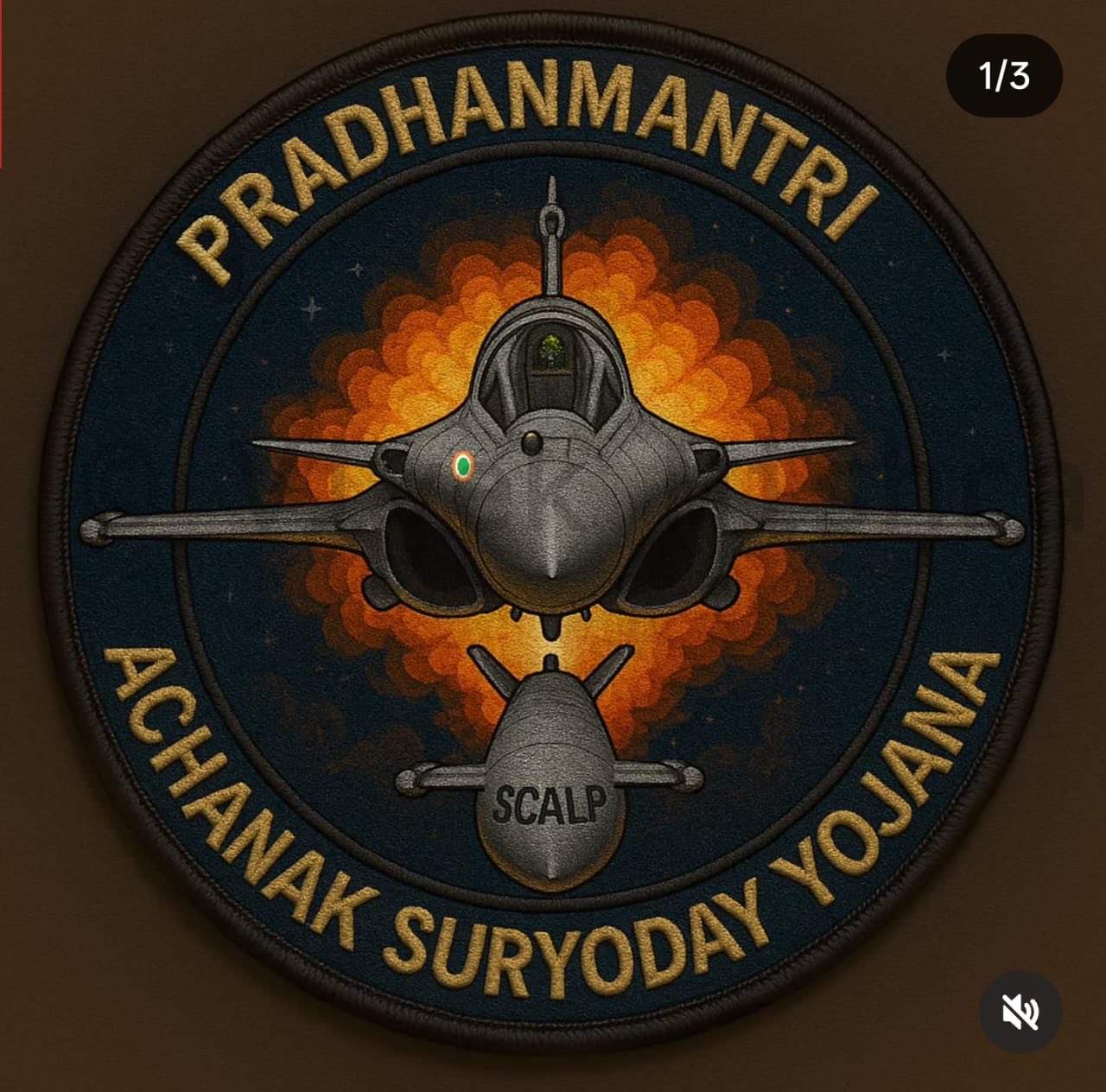On 10th May 2025, while the world blinked, India struck with surgical ferocity. In a single night, the Indian Air Force dismantled Pakistan’s war ambitions. Key airbases and air defenses were incapacitated by a lethal combo of French precision and Desi firepower. What followed wasn’t a war – it was a lesson that Pakistan won’t forget anytime soon. New Delhi, while silent in diplomacy, now holds undeniable proof of downed Chinese and American fighter jets during Operation Sindoor. The message is loud and clear: India doesn’t need to roar to dominate.
Operation Sindoor: A Masterclass By Indian Air Force
After being struck at the core of its terror hub, Pakistan began its theatrics with Operation Bunyan al-Marsoos. However, the name that promised 48 hours of fury fizzled out within 8 hours. The Indian Air Force responded with Operation Sindoor – Phase 3, launching a stunning four-wave assault using Rafale jets armed with SCALP missiles and SU-30 MKIs deploying BrahMos.
The first strike dismantled the northern command at Nur Khan Airbase.
This was a critical and strategic hit on NaPak’s Nuclear Command Center that was home to its major assets. By the time India hit Bholari and Jacobabad, Pakistan was already dialing Washington for a ceasefire. Reportedly, the intercepted communications revealed desperation – Islamabad wanted to save face before sunrise.
Rafales in the Sky, S-400s on Fire
India didn’t just strike. It erased Pakistan’s NaPak ambitions – on the sky and land. While Rafales soared overhead, India’s S-400 air defense system at Adampur launched at least 11 blistering strikes. On 10th May, the targets weren’t terror camps – they were strategic and paralyzing hits on NaPak Air Force.
India destroyed a Swedish-made Saab-2000 AEW&C system flying 315 km inside Pakistani airspace – this move blinded NaPak to everything in the sky.
But the real scalp came later! Reports state that India’s own post-op tracking confirms the downing of two F-16s – this made America nervous as its pride was struck. A Chinese JF-17 was knocked off its high horse in the sky. Even a C-130 J transport aircraft was lost to the Indian Air Force and its firepower. One by one, they fell – some in the air, some on tarmac! Thereby, serving a devastating and crippling blow to Pakistan’s air fleet and the foreign powers that arm it.
Pak’s Chinese Toys and American Showpieces Crumble
India’s message wasn’t just for Rawalpindi or Bahawalpur. It was for the Arms nexus that runs through Beijing and Washington too. HARPY drones eliminated a Chinese LY-80 system in Lahore. At Karachi, an Indian missile wiped out the HQ-9 – the Chinese version of the S-300. These weren’t just air-defense trophies; they were billion-dollar symbols of foreign dependency.
Indian missiles launched from the air turned NaPak and its foreign-bought weapons into scrap.
In parallel, Indian Navy warships moved within 260 miles of the Makran coast. Allegedly, they were ready to strike Karachi Port. But a panicked Pakistani DGMO issued a veiled nuclear threat: retaliation if India’s BrahMos hit the port. The response from India? Calm silence and locked targets.
India Holds the Cards — And the Proof
While Trump played his merry tune on a trumpet to the world and China shrieks its lies, the stock market shows the reality of who won the battle. Dassault’s share price skyrocketed while the Chinese and Turkish weapon suppliers tanked. Since the NaPak Air Force was unable to enter Indian air space – Pakistan tried to bluff its way at home, claiming victories. However, the Indian Armed Forces shrug off these baseless claims. Why? Reportedly, New Delhi is quietly holding cards close to its chest. Among them? Satellite and radar evidence of every jet downed and system destroyed — Chinese, American, and Turkish alike.
India’s leadership isn’t gloating on primetime TV – No flashy press conferences.

Bharat will put out its truth when it’s ready – with facts on which targets were hit and how messages were delivered with precision.
And somewhere in Langley and Zhongnanhai, analysts are poring over the wreckage, realizing India didn’t just win a border skirmish. It broadcasted a doctrine: Attack precisely, deny loudly, prove silently.
In Operation Sindoor, India didn’t just respond to provocation. It rewrote the rules of engagement. With SCALP and one BrahMos – Bharat brought forth the zero margin for error. What Pakistan called a retaliation ended in a rout. And behind the scenes, America and China must now contend with a new regional truth:
India isn’t just bluster anymore – it’s nuclear power that hits harder and remembers everything.


